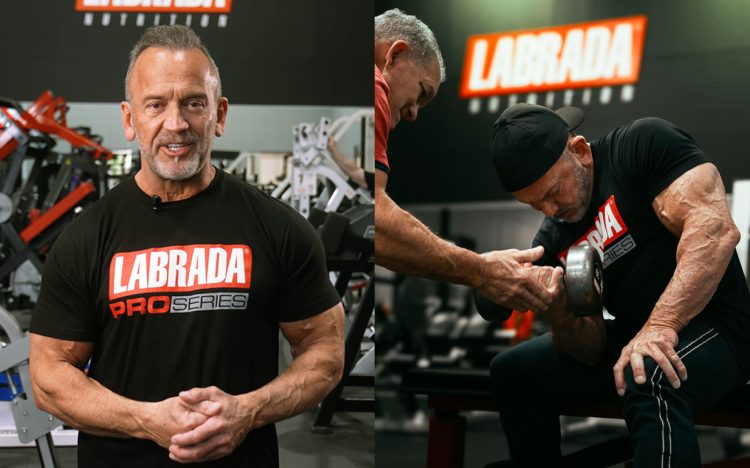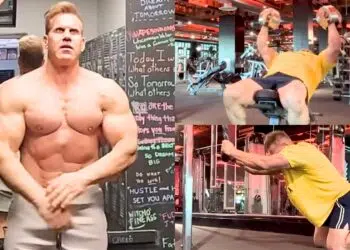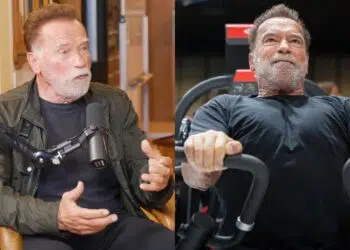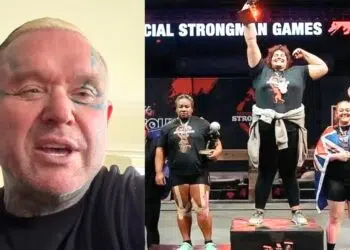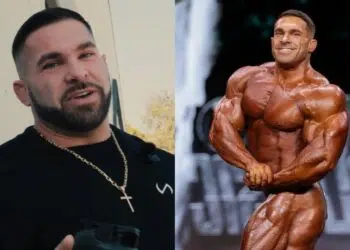Lee Labrada is the picture of youth in retirement, having exited the highest levels of bodybuilding with his health intact. In his latest offering to fans, he revealed his best tips for avoiding muscle tears using range of motion techniques.
As a perennial Olympia contender, Lee Labrada has seen it all as an IFBB Pro bodybuilder. He routinely tested himself against a crop of the sport’s most recognizable names, from former eight-time Mr. Olympia Lee Haney and Rich Gaspari to Olympia titleholder Samir Bannout.
Labrada was a one-of-a-kind competitor who took advantage of any resource at his disposal to elevate his name in bodybuilding. Having operated on a clean diet and sporting dry and detailed conditioning, Labrada regularly bested his peers despite giving up 30-50 pounds of body weight.
In retirement, his passion for fitness, health, and longevity is on constant display. Labrada offers fans ‘over 50’ workouts and several training sessions, which center around safety, efficiency, and superior technique. This time, he explains how to avoid muscle tears, a common issue lifters run into, especially when pushing the limits of their strength.
Level Up Your Fitness: Join our 💪 strong community in Fitness Volt Newsletter. Get daily inspiration, expert-backed workouts, nutrition tips, the latest in strength sports, and the support you need to reach your goals. Subscribe for free!
Lee Labrada Provides Tips for Avoiding Muscle Tears
According to Labrada, the ‘end range’ of motion is typically the point in an exercise that causes injuries.
“The end range of motion of a weight-bearing exercise. Whether you are an experienced lifter or just starting out, it’s important to understand the limitations of your muscles, tendons, and joints in order to optimize your training journey both in terms of avoiding injury and increasing results.”
The end range of motion typically causes the muscle to be fully stretched or contracted, which can make tendons or joints vulnerable to injury.
“The end range of motion is the point in an exercise movement where your muscle is either fully stretched or fully contracted. Usually, that means that you’re all the way at the bottom or you’re all the way at the top or lock-out position of an exercise. These are the points where the muscle tendon and the joint itself can be most vulnerable to injury.”
Even though some bodybuilders have found success with improper form, Lee Labrada advised against bouncing weight as it can result in torn muscles, tendons, or injured joints.
“The bouncing motions can actually result in a tear. If you’re not being careful or you’re going too fast in the movement or you’re using a ballistic or bouncing type of movement, this can eventually lead to serious consequences such as torn muscles, torn tendons, or injured joints.”
He pointed out that lifters are at the highest risk of injury when they bounce the weight at the end range of motion.
“The most dangerous of all is the bounce-type of movement at the end range of motion. That’s the part where the muscle is fully stretched under tension and that puts tremendous stress on muscles and tendons because the body not only has to move the weight that you’re lifting but it also has to overcome the momentum of that weight against gravity.”
Using a barbell while sitting down, Lee Labrada bench presses, underlining why bouncing the weight is so dangerous.
“We want to talk about what you should not do, which is bouncing at the end ranges. This bounce for example, bouncing the bar off your chest during a bench press can cause a dramatic increase in stress at precisely the point of most vulnerability. This is the kind of thing that can lead to a pec tear and that is exactly what you want to avoid,” Labrada shared.
He also explains why it is best to avoid bouncing at the bottom of compound movements like the squat.
“Another example is bouncing at the bottom of a squat. This can cause quad tears or even back injuries,” adds Labrada. “We want to be careful with not bouncing at the bottom of a compound movement like the squat.
To elaborate on practices that avoid disastrous muscle tears, Labrada emphasized the following:
“A safer method for performing an exercise and one that can actually increase growth-producing intensity is to avoid the extreme end ranges altogether, which keeps more constant tension on the muscle. So, shy away from bouncing at the bottom of the movement or locking out at the top.”
“There’s no question that the proper form is crucial in weightlifting by avoiding the end range of a motion or at least going slowly as you near the end ranges, you help to ensure you’re engaging the target muscles without compromising your joint integrity. This not only reduces the risks of injuries but also allows for more effective intense and controlled workouts.”
He also underlined the importance of controlling movements during weightlifting.
“In my career, I’ve seen many people make significant progress by focusing on controlled movements and avoiding the extreme end ranges. It’s not about lifting the heaviest weights, it’s about lifting them safely and effectively.”
“The key takeaway here is to prioritize the execution of quality exercise movements over the quantity or weight that you lift. Remember: fitness is a lifelong journey and taking care of your body along the way is so important. By being careful with or avoiding the end ranges of motion in your weight lifting routines, you’re not only preventing injuries but you’re setting yourself up for long-term success and a healthier stronger you.”
This is far from Lee Labrada’s first exercise demonstration of the season. He recently walked fans through four of his favorite tips for shredding stubborn belly fat. Labrada uses clean dieting, protein intake, carb consumption, and daily cardio to keep the body as lean as possible.
From optimizing workouts to avoiding injuries, Lee Labrada’s wisdom is backed up by decades of experience. When lifting weights, he can’t stress enough the importance of moving the weight in a controlled manner to avoid injury.
RELATED: Lee Labrada Offers ‘3 Critical Steps’ for Burning Off ‘Unwanted Body Fat on Your Chest’

